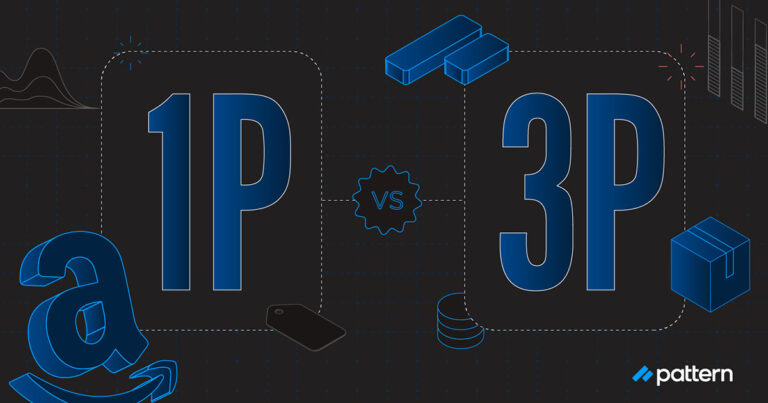Canada, the home of hockey, maple syrup, and moose, right? Well, yes, but that’s not all. Businesses shouldn’t dismiss it so easily for its stereotypical offerings, and instead dig a little deeper into the Canada ecommerce market.
Pattern has been a marketplace seller in Canada for over five years now. It is often the first market that astute US-based brands look to after they’ve established themselves domestically. But what is it that makes selling online in Canada a great opportunity for brands? Well to start, Canada ecommerce has the following:
- Digital buyer penetration of 75%
- $30.6 billion USD ecommerce market
- Mature ecommerce market that is comparable to the US
- Proximity to U.S. manufacturing or warehouses for convenient logistics
While there is certainly a great opportunity for growth in crossing that border north of us, as with any international expansion, there are regulations that must be met and duties and taxes that must be paid. As an expert Canadian Amazon seller, we provide our analysis here of why we recommend brands expand to Canada and how we help brands get there.
The ecommerce site competitive landscape in Canada is somewhat similar to the USA currently: Amazon CA is largely dominant over all other major players, but Walmart Canada comes in as the second largest. Other familiar faces make up the top 10 ecommerce sites in Canada, including eBay, Newegg, Best Buy, and Home Depot.
Amazon Canada
Amazon Canada is the #1 ecommerce marketplace in the country, generating nearly $7.5 billion USD in net sales in 2020. Of those billions of dollars in sales, the top categories for Amazon Canada shoppers are:
- Apparel and accessories
- Computers and electronics
- Books
- Footwear
- Beauty
Deciding which products to list in Amazon Canada and which to promote is more complex than just using the same strategy you utilise in the US. Pattern’s marketplace experts help brands determine things like which products can be sold, non-tariff barriers like product labelling and regulatory compliance, and expected taxes and tariffs of this new market.
Pattern recently helped a vitamin and supplements partner get the data they needed for a successful, compliant launch on Amazon CA, resulting in 55% brand growth year over year. And that’s not the only brand we’ve helped launch.
Fulfilment in Canada is best managed using FBA, similar to the US market. Pattern’s brand partners send their product directly to our Toronto warehouse where we prep them for shipment into FBA, and send them off on their behalf. For products not eligible for FBA, we set those products up in our warehouse and ship them directly to customers, handling fulfilment and logistics across borders.
Walmart Canada
Walmart Canada is the second largest Canadian ecommerce marketplace, and serves as an excellent expansion opportunity for brands looking to sell there. In 2020 Walmart Canada brought in $3.1 billion USD in ecommerce revenue. Additionally, the company is investing $110m in store renovations to enhance the omnichannel experience, expanding their product assortment, and piloting 10 hybrid locations with fulfilment space within stores.
For brands with products compliant with Canadian labelling and other regulations, products are shipped directly to the customer from a warehouse. While the best customer experience is created by having products in-country before shipping them to the customer, Walmart is running a programme called Ship With Walmart.
Similar to Amazon’s NARF program, sellers based in the US can make their products available on Walmart Canada and ship them cross-border. However, buyers and sellers should be aware that many products will have additional tariffs and taxes on top of what the customer purchases, and shipping will be 2-8 days.
Success with Canada Ecommerce
Many of Pattern’s brands find great success as they expand to Canada, with most brands seeing revenue around 2-5% of their US Amazon revenue. Success in the Canadian ecommerce market, however, is directly correlated to how aggressive of a strategy the brand pursues with advertising, catalogue breadth, and maintaining their supply chain. Some of the brands taking Canada the most seriously are seeing revenue north of 10% of what they are making on Amazon in the US., not bad numbers to see.
Ready to benefit from the Canada ecommerce market or explore other new international opportunities? Get in touch with Pattern’s marketplace experts and learn the global potential of your brand.





